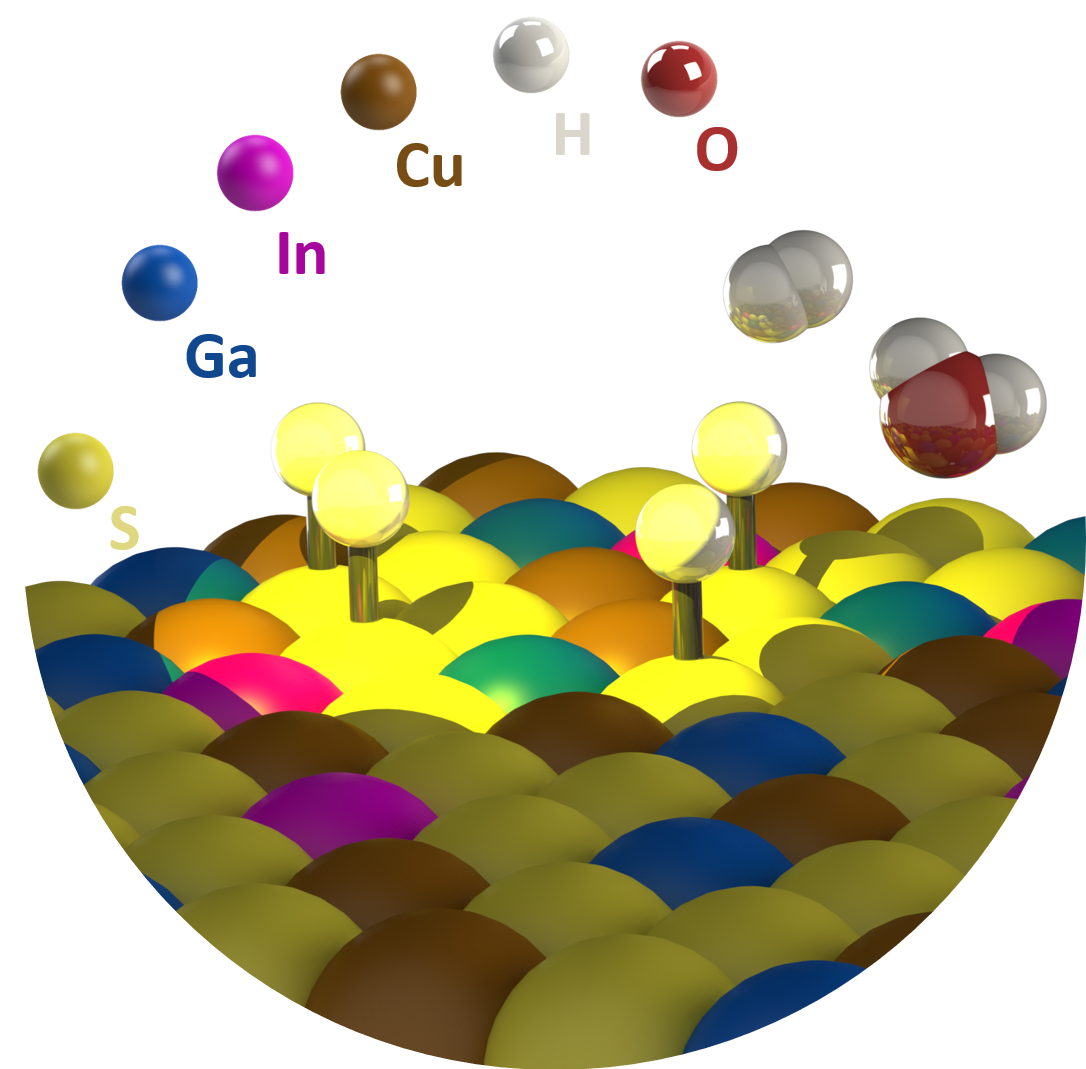Operando Spectroelectrochemical Observation of Surface States and Active Sites in Chalcopyrite Photocathodes for Solar Water Reduction
Photoelectrochemical (PEC) water splitting is emerging as a solid platform that could potentially sustain a carbon-free hydrogen community.[1] Among the different photoactive materials that could integrate a PEC device for overall water splitting, the group of I-III-VI semiconductors composed of CuIn0.3Ga0.7S2 (CIGS) is drawing increasing attention as photocathode materials owing to their outstanding optoelectronic properties and tunable band gap. However, serious bottlenecks for the implementation of this class of materials arise from first, the costly fabrication of PV-grade thin-films normally relying on non-scalable vacuum techniques, and second, the need for overlayers/catalyst to perform the hydrogen evolution reaction.[2,3]
Recently, we reported a novel all-solution-processed CIGS photocathode that demonstrates an unprecedented photoelectrocatalytic performance, even in the absence overlayers or co-catalyst.[4] Although the photocurrent onset is still delayed with respect to the flat-band potential, this breakthrough offers an elegant solution for cost-effective solar fuel production. Motivated by its splendid intrinsic catalytic properties and unsatisfactory photovoltage, we deployed three complementary operando spectroelectrochemical techniques viz. photoelectrochemical impedance spectroscopy (PEIS), intensity-modulated photocurrent spectroscopy (IMPS) and operando Raman spectroscopy to find out the reason for the limited photovoltage of this material. The new insights gained into the characteristics of the semiconductor-liquid junction (SCLJ) offer unprecedented information on the interfacial carrier dynamics (e.g. surface states, charge transfer/recombination kinetics and catalytic active sites) on this type of materials. Our results provide a closer look at the SCLJ and build the fundamental understanding for not only shift the onset potential but also further increase the PEC performance.

[1] Y. Liu, N. Guijarro, K. Sivula, Helvetica Chimica Acta, 2020, 103, e2000064.
[2] Y. Liu, F. Le Formal, F. Boudoire, L. Yao, K. Sivula, N. Guijarro, J. Mater. Chem. A, 2019, 7, 1669-1677.
[3] Y. Liu, F. Le Formal, F. Boudoire, N. Guijarro, ACS Appl. Energy Mater., 2019, 2, 6825-6833.
[4] N. Guijarro, M. S. Prévot, X. Yu, X. A. Jeanbourquin, P. Bornoz, W. Bourée, M. Johnson, F. Le Formal, K. Sivula, Adv. Energy Mater., 2016, 6,1501949.